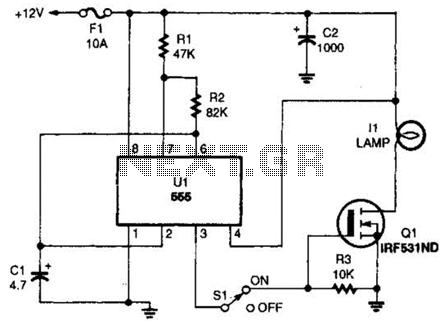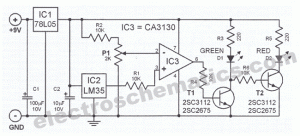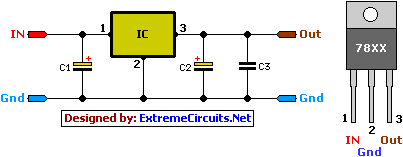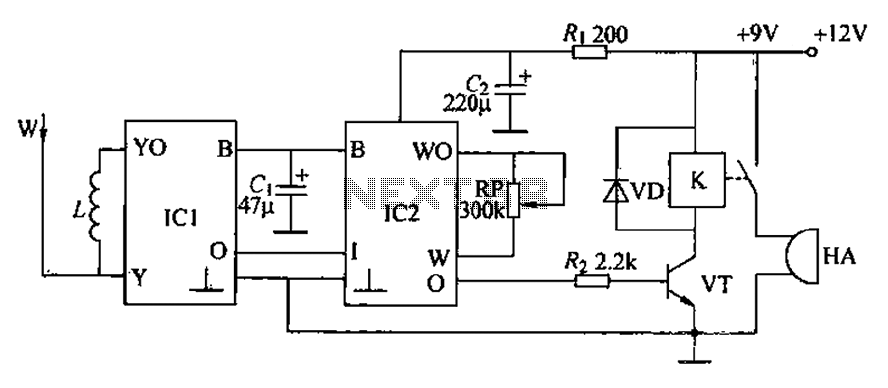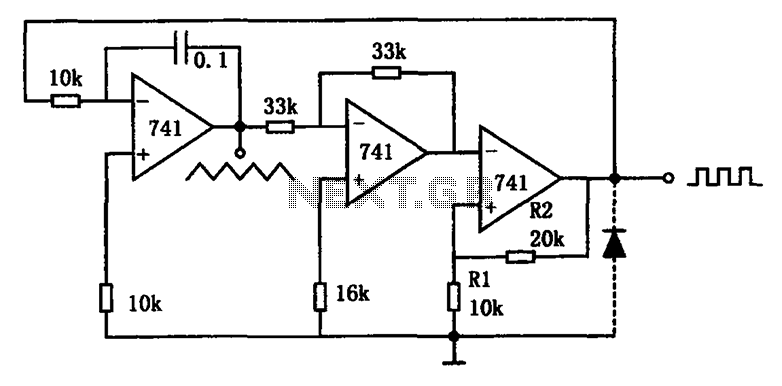
UPC1651 FM wireless microphone circuit
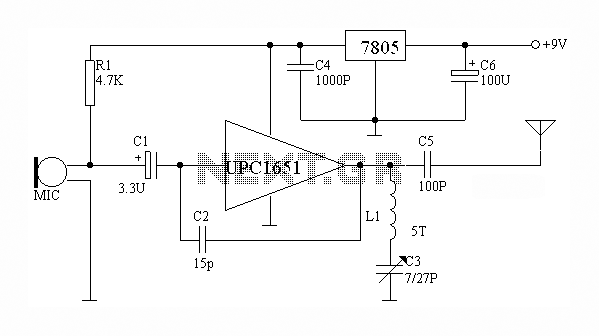
The circuit depicted utilizes the UPC1651 integrated circuit produced by NEC Corporation of Japan. It offers high gain and stability, ensuring optimal performance for microphones. The design incorporates an FM transmitter circuit. The system employs a flexible antenna measuring 40-50 cm in length, providing an effective transmission range exceeding 30 meters. By carefully adjusting the spacing of the inductor (L) and the fine-tuning capacitor, the circuit can transmit frequencies across a range of 88-108 MHz. The inductor is constructed using 0.51 mm diameter enameled wire wound around a cylindrical form with a diameter of 4 mm for approximately five turns.
The circuit operates primarily as an FM transmitter, leveraging the UPC1651 integrated circuit's capabilities to amplify audio signals captured by the microphone. The high gain of the circuit is crucial for ensuring that the audio signal is sufficiently strong for effective transmission over the desired range. The choice of the UPC1651 is significant, as it is designed for low-power applications while maintaining high fidelity, making it suitable for wireless audio transmission.
The flexible antenna, measuring between 40 and 50 cm, is designed to optimize the transmission characteristics of the circuit. The effective range of over 30 meters allows for versatile applications, including personal audio devices, wireless microphones, and other audio transmission systems. The adjustment of the inductor (L) and the fine-tuning capacitor is essential for achieving the desired frequency range of 88-108 MHz, which corresponds to the FM broadcast band.
The inductor is created using 0.51 mm enameled wire, which is wound around a cylindrical form with a diameter of 4 mm. This specific configuration, involving five turns, is critical for achieving the necessary inductance to match the circuit's requirements. Proper tuning of the inductor and capacitor is necessary to ensure that the transmitter operates efficiently within the specified frequency range while minimizing distortion and maximizing audio quality.
Overall, this circuit design demonstrates a practical application of integrated circuit technology in the realm of wireless audio transmission, highlighting the importance of component selection and configuration in achieving reliable performance.Circuit as shown. This circuit uses NEC Corporation of Japan as a major production upc1651 integrated circuit device, the circuit gain high, stable, thus ensuring high performance microphone. It consists of using the FM transmitter circuit. It is used as a drag line 40--50cm flexible antenna, the effective transmission range is greater than 30M. Carefully adjust the spacing L and fine-tuning capacitor, it can transmit frequency coverage of 88--108MHZ.
FIG diameter L 0.51mm enameled wire around five laps were derived from the 4mm diameter cylindrical.
The circuit operates primarily as an FM transmitter, leveraging the UPC1651 integrated circuit's capabilities to amplify audio signals captured by the microphone. The high gain of the circuit is crucial for ensuring that the audio signal is sufficiently strong for effective transmission over the desired range. The choice of the UPC1651 is significant, as it is designed for low-power applications while maintaining high fidelity, making it suitable for wireless audio transmission.
The flexible antenna, measuring between 40 and 50 cm, is designed to optimize the transmission characteristics of the circuit. The effective range of over 30 meters allows for versatile applications, including personal audio devices, wireless microphones, and other audio transmission systems. The adjustment of the inductor (L) and the fine-tuning capacitor is essential for achieving the desired frequency range of 88-108 MHz, which corresponds to the FM broadcast band.
The inductor is created using 0.51 mm enameled wire, which is wound around a cylindrical form with a diameter of 4 mm. This specific configuration, involving five turns, is critical for achieving the necessary inductance to match the circuit's requirements. Proper tuning of the inductor and capacitor is necessary to ensure that the transmitter operates efficiently within the specified frequency range while minimizing distortion and maximizing audio quality.
Overall, this circuit design demonstrates a practical application of integrated circuit technology in the realm of wireless audio transmission, highlighting the importance of component selection and configuration in achieving reliable performance.Circuit as shown. This circuit uses NEC Corporation of Japan as a major production upc1651 integrated circuit device, the circuit gain high, stable, thus ensuring high performance microphone. It consists of using the FM transmitter circuit. It is used as a drag line 40--50cm flexible antenna, the effective transmission range is greater than 30M. Carefully adjust the spacing L and fine-tuning capacitor, it can transmit frequency coverage of 88--108MHZ.
FIG diameter L 0.51mm enameled wire around five laps were derived from the 4mm diameter cylindrical.
Warning: include(partials/cookie-banner.php): Failed to open stream: Permission denied in /var/www/html/nextgr/view-circuit.php on line 713
Warning: include(): Failed opening 'partials/cookie-banner.php' for inclusion (include_path='.:/usr/share/php') in /var/www/html/nextgr/view-circuit.php on line 713
